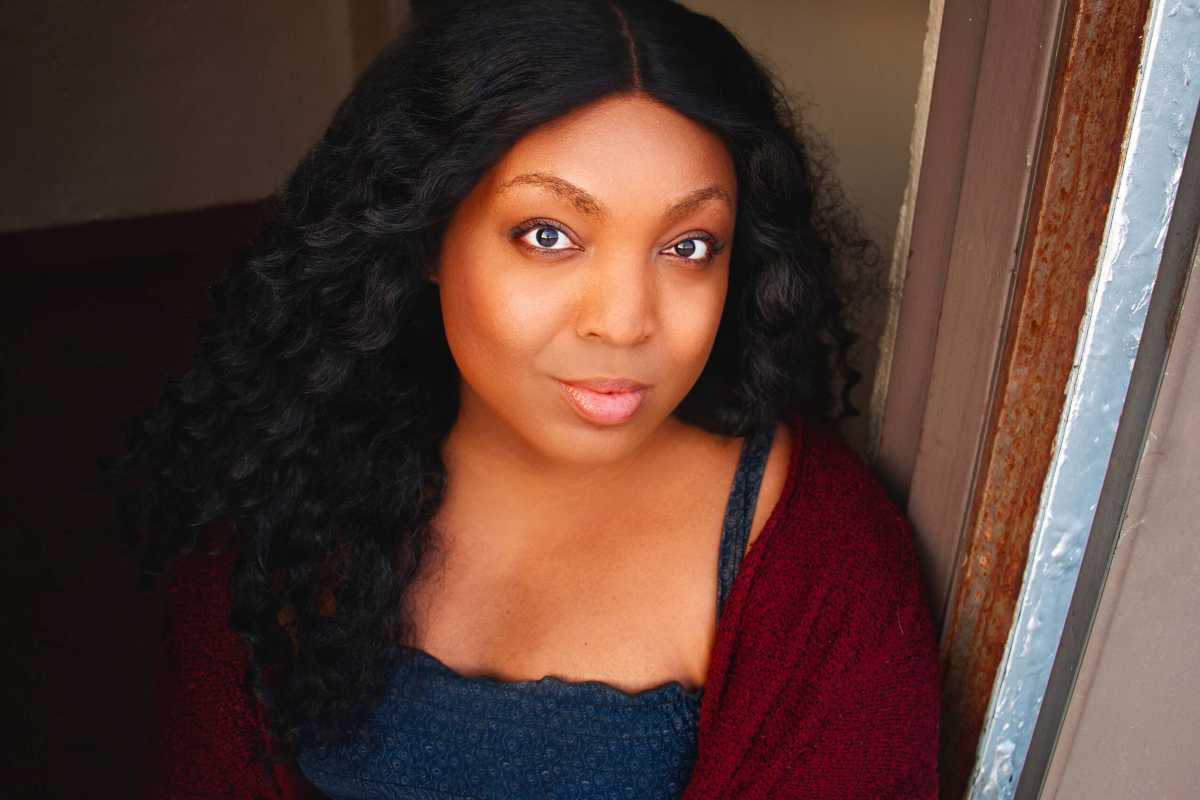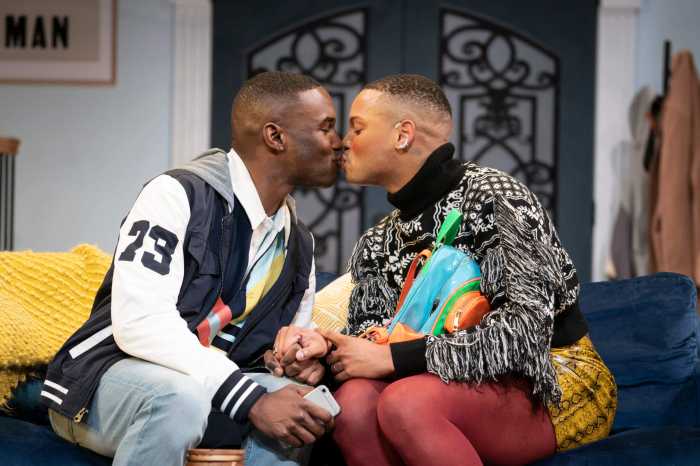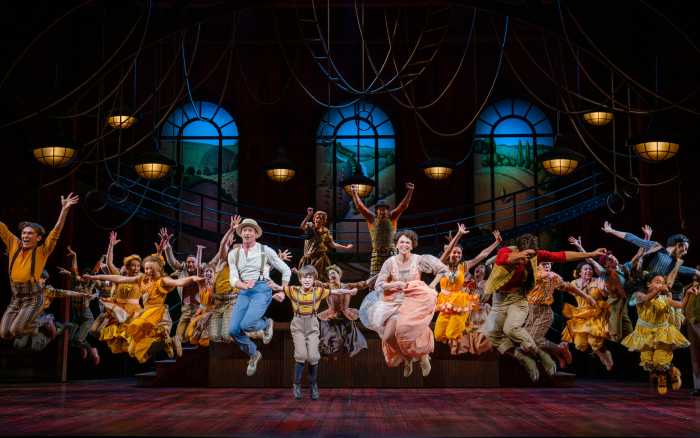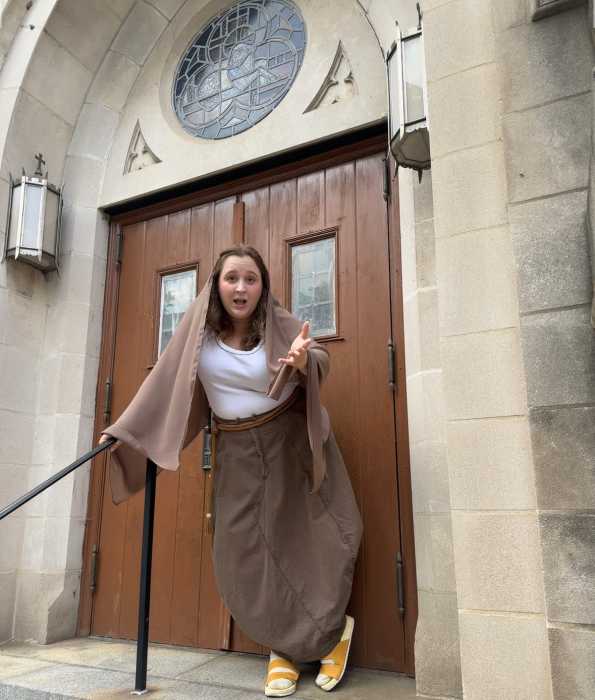In recent years, there’s been a surge in theatrical works featuring trans and gender non-conforming roles or actors, shining a much-needed spotlight on the trans, non-binary, two-spirit community (TNB2S+).
On Broadway, there was Billy Porter’s Tony-winning turn as Lola in the drag-centric “Kinky Boots.” “Bring It On: The Musical” featured La Cienega, the first transgender high school student, played by Gregory Haney. Drag artist Peppermint was the first out trans woman to originate a lead role, starring in “Head Over Heels.”
Currently, out trans performer Angelica Ross portrays Roxie Hart in “Chicago.” Lillias White, a cis woman, just took over the role of Hermes from André De Shields in “Hadestown.” Transgender actor Hennessy Winkler is tackling the Will Parker role in the Broadway tour of “Oklahoma!” J. Harrison Ghee, who identifies as non-binary, will soon portray Jerry/Daphne in “Some Like It Hot,” a tuneful twist to the classic cross-dressing romp.
L Morgan Lee made history earlier this year as the first openly transgender performer to be nominated for a Tony Award thanks to her bold performance in “A Strange Loop,” which includes characters across the gender spectrum. As luck would have it, she was up against juggernaut Patti LuPone, who belted out Sondheim’s iconic “Ladies Who Lunch” in “Company.” LuPone triumphed.
On top of her eight shows a week, Lee is a key player in the Breaking the Binary Theatre Festival, running October 10-16 at Theatre Row and coinciding with National Coming Out Day. The festival showcases work created exclusively by TNB2S+ artists, who historically have been misrepresented both onstage and behind the scenes. Lee has been tapped to direct the final evening, comprised of 15 bespoke monologues. Lee chatted with Gay City News via Zoom between gigs.
“So many of us have not had a chance to get inside the room,” Lee said of the marginalization of TNB2S+ theater artists. “The movers and shakers don’t know who we are, but it doesn’t mean we’re not here. A lot of trans people have not had the privilege of being groomed or the opportunity to truly experience workshops and the things that help us hone the craft. This [festival] is an opportunity to do that — to bring a lot of trans folks into a space and work through readings and really get a chance to invest more in their talents.”
While Lee, who identifies as a binary trans woman, is elated that more TNB2S+ people are being represented onstage, it’s only a first step. She asserts that most cis theatermakers assume that they can simply insert a trans person into the existing space and conduct business as usual. Yet they often neglect to consider how other elements might be impacted.
“It’s like, you’ve invited someone into your home but your home was not ready for them.” Lee said. “You did not make your home welcoming to that person and then made them feel like they should just be grateful to be there. Which is probably not the best way to host someone.”
The multitalented star voiced concerns about the much-anticipated new musical “Some Like it Hot,” which revolves around the trope of cis men wearing dresses for laughs. The creators reimagined the role of Jerry/Daphne by casting a non-binary individual. And while that is commendable, when she saw an early workshop, there were portions of the script that she felt were demeaning to TNB2S+ people. There was one line that particularly irked her.
“I felt that the team could take a look and see how it might sound to a trans person watching this,” Lee said. “We are not typically thought of in the process of writing. I think this is why it’s necessary for us to be in the space when these things are being built, because you can be well intentioned and still cause harm.”
An example of misguided inclusion of a gender non-conforming character was in “Matilda the Musical,” which featured the deranged headmistress Miss Trunchbull, played by a male, the Tony-winning Bertie Carvel. Yet the underlying message was that a woman with masculine traits was inherently evil. Many in the queer community protested, calling the portrayal transphobic and irresponsible.
Lee was honored to be asked to direct the final night of the festival, because the endeavor is a safe space created by TNB2S+ artists, for TNB2S+ artists.
“I think the idea of breaking the binary is really about expanding people’s minds and the notion of what it means to be trans,” Lee said. “There is no single lane. And I think that often cis people are excited to learn about trans people. But because we constantly see the same things over and over, there’s sometimes a singular understanding of what being trans is. When put in people’s hands who are not trans, our lives and experiences are oftentimes diminished to simply transition stories and coming out stories when the reality is, our everyday life is so much more fruitful.”
George Strus, founding artistic director and a dramaturg for the Breaking the Binary Festival, feels lucky to be working with Lee.
“L Morgan is truly one of the greatest thinkers I’ve ever met,” said Strus, who identifies as a genderqueer Latinx theatermaker and goes by they/he pronouns. “She’s a wonderful community builder, director, and writer. She’s such a multifaceted artist.”
As Strus tells it, Breaking the Binary is the first theater festival of its kind. Strus hit upon the idea about a year ago after a stint working as a theatrical agent where they interacted with members of the trans community.
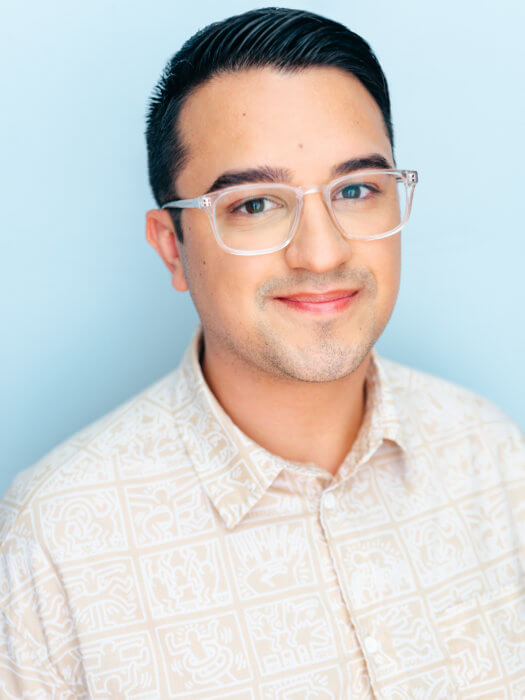
“I quickly became very intoxicated by the notion of working with an artist, giving them resources, and helping them achieve their visions and their dreams,” said Strus.
After two high-profile groups dedicated to theater incubation went under during the pandemic, Strus was acutely aware that there was a void.
“What can I do to rectify this and create a space that was missing in the theater ecosystem?” they wondered. “I took that desire for community within trans folks in the theater, the desire to provide resources and an outlet for folks to explore and dream. And that is how the Breaking the Binary Theatre Festival came to be.”
Not that the venture was without its challenges. When Strus would describe the festival, explaining how they are employing over 100 artists in the TNB2S+ community, many cis people were surprised, even dismissive. They were clueless about the vast number of gender non-conforming theater artists and the limited opportunities for work.
“The truth of the matter is, this space could operate tenfold,” Strus explained. “There are so many wonderful trans and non-binary theatermakers out there doing their thing, making wonderful art. So I’m excited that we now have an outlet to showcase those voices.”
Strus added that when gender non-conforming folks are employed, they are often underpaid. They made certain that all festival participants earn a New York living wage, which put an extra level of stress on fundraising. Also important was making sure the festival is accessible to all, so tickets are free of charge.
“When you think of a space like this that lives on the intersection of community-building, activism, and new play development, the thought of someone wanting to be a part of this space but not being able to, due to any fiscal barrier, didn’t sit well with me,” Strus said.
It’s important to note that the festival does include cis roles. According to Strus, the notion of actually putting trans and non-binary performers in cis roles was an exciting statement that they wanted to make. “We don’t only have to play the roles that are written for trans and non-binary characters,” they said.
For her part, Lee contends that, despite shared goals of wanting to create gender-expansive stories, there’s room for improvement when it comes to communication. “Until we’re able to step back and put ego aside and actually listen to others a little bit more, we’re never going to move forward.”
So how did it feel to be the first openly trans woman nominated for a Tony?
“It was earthshattering for me, because I’ve dreamed of the possibility of it happening,” Lee enthused. “I’ve been acting in New York City for 20 years. For this to happen after many years is like, Oh God, thank you. The pieces are finally coming together.”
Lee said that it feels wonderful to be formally putting on the director’s hat after years of primarily being an actor. “I’ve actually directed a lot over the years. It just hasn’t been in situations where I was getting a paycheck to do so.”
I asked Lee if one reason for past TNB2S+ invisibility was because we didn’t have the vocabulary to describe them. Terms like non-binary and genderfluid and cisnormative were previously not part of common parlance. I admitted, somewhat sheepishly, that I am often flummoxed by the terms.
“Honey, that vocabulary is constantly evolving,” she said. “Even many of us within the [TNB2S+] community are having to constantly learn and keep up with the ever-changing terminologies.”
Breaking the Binary Theatre Festival | Theatre One at Theatre Row | 410 W. 42nd St. | Runs Oct. 10 – 16 | Free admission | www.btb-nyc.com

